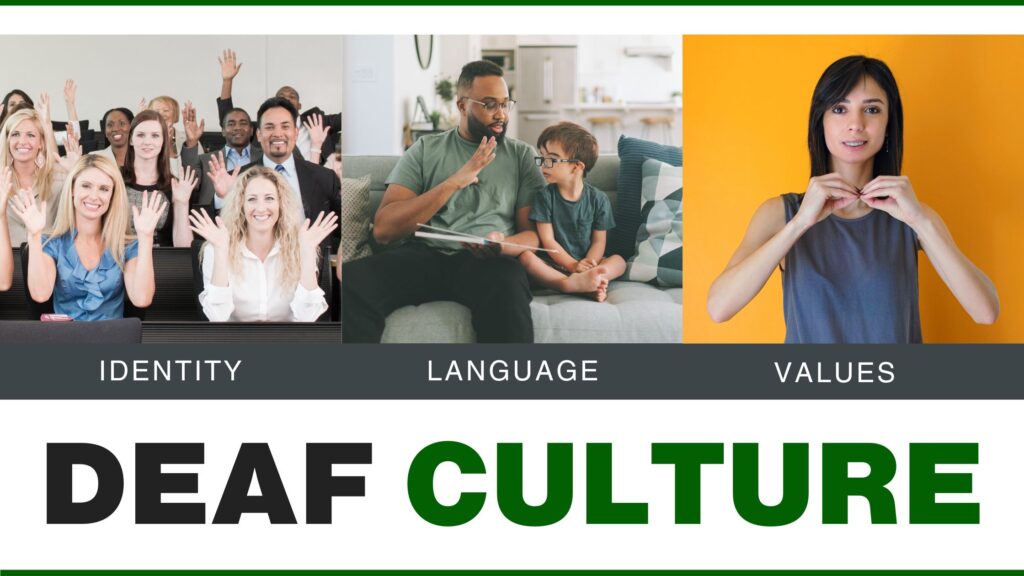The culture of Deaf individuals revolves around a signed language and encompasses values, traditions, and behavioral norms unique to the Deaf community.
Understanding Deaf culture is crucial as it helps connect Deaf and Hard of Hearing individuals with those who can hear. This fosters mutual respect and encourages understanding and acceptance across all members of society.

Identity
The term “Deaf” with a capital ‘D’ denotes a specific group of individuals who share a language, culture, and are actively involved in the Deaf community.
deaf, with a lowercase ‘d’, describes individuals with hearing loss who are not closely affiliated with the Deaf community and may not consistently use sign language.
Language

Sign language is the most unifying characteristic of Deaf culture and community. It is a visual communication method that conveys meaning through hand gestures and movements, body language and facial expressions, instead of spoken words.
Values
- Deaf individuals hold great respect for their language, the Filipino Sign Language (FSL).
- Deaf individuals value their identity as Deaf people and see no value in becoming a different person.
- Deaf individuals typically do not perceive themselves as disabled or impaired and prefer not to be labeled as “hearing impaired”.
- Deaf individuals cherish their children as well as other people’s Deaf or hearing children, embracing them warmly into their community.
Behavior
- Maintaining eye contact is crucial for Deaf individuals. It’s considered disrespectful to look away while someone is signing to you.
- During conversations, Deaf individuals tend to sit or stand at a distance from each other to ensure they have a comfortable view of each other’s signing space.
- Gently tapping the shoulder or upper arm is an appropriate way to get the attention of Deaf individuals.
- If you are not in close by, you can request someone nearby to tap the shoulder or upper arm of the Deaf person to get their attention.
- Deaf individuals often communicate with directness. Their openness and straightforwardness stem from their deep appreciation for communication and connection.
- In Deaf culture, it is considered acceptable to use table or floor vibrations to get each other’s attention.
- Waving your hand to get the attention of Deaf individuals is considered acceptable, typically done within their peripheral vision.
- It is also acceptable to switch the lights on and off to get the attention of a Deaf person.
Technology
In the technology field, hearing aids or cochlear implants are commonly viewed as the main solutions to meet the needs of the Deaf community.
When it comes to technology, the Deaf community’s unique approach includes:
- Using flashing lights for doors and phones
- Employing vibrating alarm clocks
- Providing closed captions for Deaf individuals to enjoy videos
- Incorporating sign language interpreters who use Filipino Sign Language (FSL) in TV news and public affairs programs
